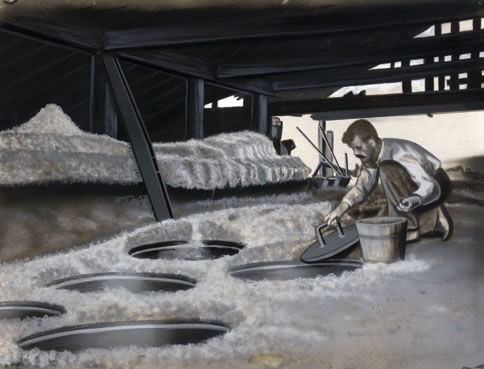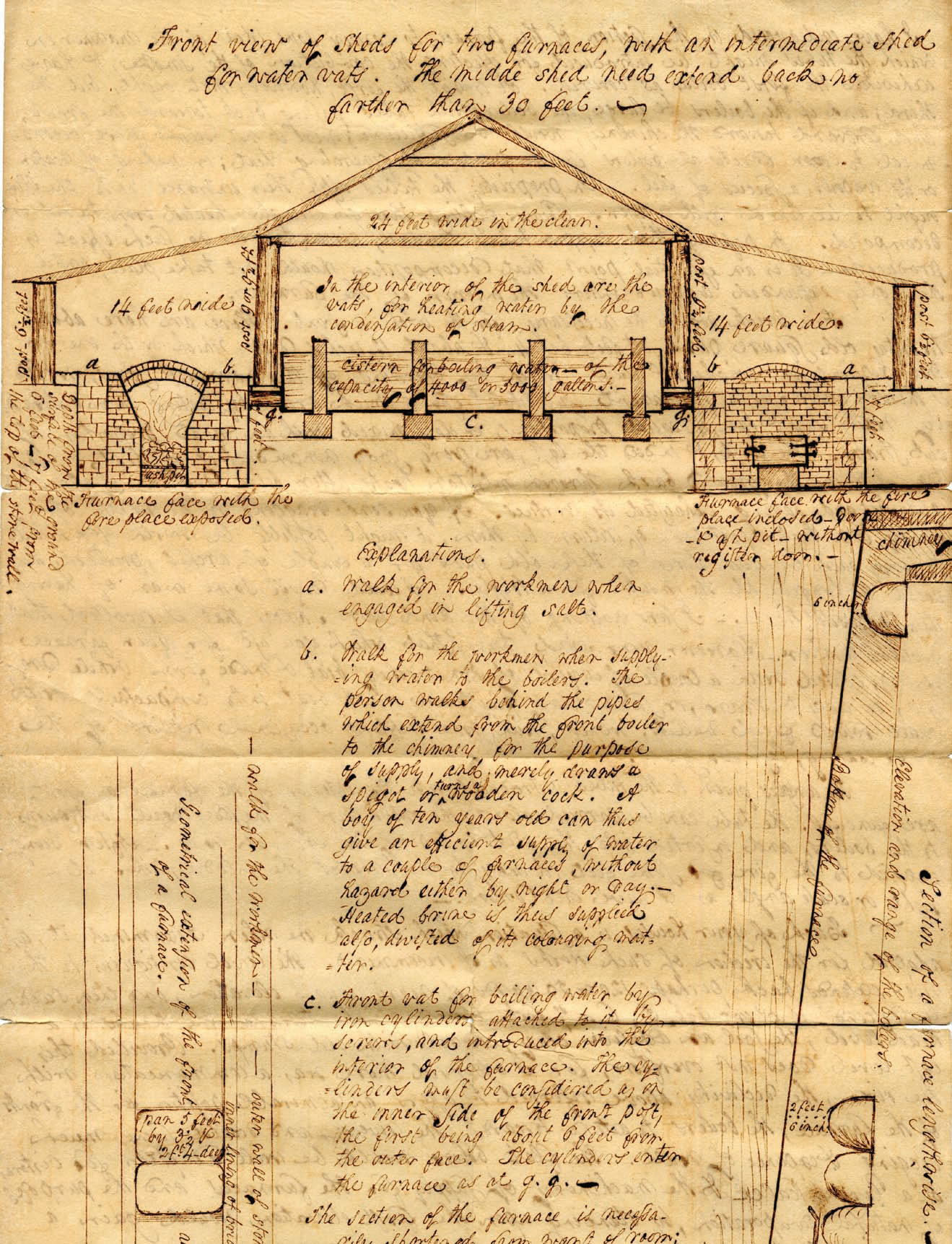David L. Ward, James Colquhoun and the Little Sandy Salt Works
Browsing Our Archives
By Jacob F. Lee
Special Collections Assistant
About |
 The recently acquired Speed Family Papers are a tremendous resource for Kentucky history in a number of areas. Mostly related to the family and descendants of Attorney General James Speed, the collection covers the Civil War and Reconstruction, World War I, the Korean War, and numerous other topics from the 1830s to the 1970s. However, the collection also includes a small batch of correspondence written to David L. Ward, an early resident of Jefferson County, in the 1810s. Although Ward ran a mill and other business enterprises in and around Louisville, he also held a financial interest in the Little Sandy Salt Works, in what is now Grayson, KY. Dating from 1813 to 1815, Ward’s correspondence in the Speed Family Papers details the operations at Little Sandy. Among reports from those at the works are also letters from James Colquhoun, who was probably employed at the Kanawha Salines, in present day West Virginia. Colquhoun’s letters to Ward offered suggestions on how to increase salt production while decreasing operating costs. Most significantly, Colquhoun also sent a detailed diagram (pictured at right), depicting an ideal salt works.
The recently acquired Speed Family Papers are a tremendous resource for Kentucky history in a number of areas. Mostly related to the family and descendants of Attorney General James Speed, the collection covers the Civil War and Reconstruction, World War I, the Korean War, and numerous other topics from the 1830s to the 1970s. However, the collection also includes a small batch of correspondence written to David L. Ward, an early resident of Jefferson County, in the 1810s. Although Ward ran a mill and other business enterprises in and around Louisville, he also held a financial interest in the Little Sandy Salt Works, in what is now Grayson, KY. Dating from 1813 to 1815, Ward’s correspondence in the Speed Family Papers details the operations at Little Sandy. Among reports from those at the works are also letters from James Colquhoun, who was probably employed at the Kanawha Salines, in present day West Virginia. Colquhoun’s letters to Ward offered suggestions on how to increase salt production while decreasing operating costs. Most significantly, Colquhoun also sent a detailed diagram (pictured at right), depicting an ideal salt works.
 The first salt workers arrived at Little Sandy in 1801, and within 20 years, the site had become a large salt producer. At the end of the 1810s, one traveler estimated that Little Sandy produced 10,000 bushels of salt a year. It is unclear when Ward purchased an interest in the salt industry at Little Sandy, but by early 1814, others in the business knew that Ward was planning to build a salt works at the site. In February 1814, Colquhoun wrote to Ward offering assistance in the construction of a new works at Little Sandy. Colquhoun recommended “an entire relinquishment of the present mode of operating” and promised to send recommendations for a better way of producing salt. He insisted that if constructed properly, the new works would produce as much salt with nine furnaces and 60 workers as other works produced with 30 furnaces and 240 laborers. In June, based upon his work at Kanawha, Colquhoun contacted Ward regarding the best way to extract salt from the waters at Little Sandy. His six recommendations offered some suggestions related to processing salt, but Colquhoun focused on the construction of the works. He advised a different layout than what was employed elsewhere, including placement of the boilers and decreasing the size while increasing the number of cisterns used to boil the salt brine. Two weeks later, Colquhoun again wrote to Ward, this time enclosing a sketch of how to construct the salt works.
The first salt workers arrived at Little Sandy in 1801, and within 20 years, the site had become a large salt producer. At the end of the 1810s, one traveler estimated that Little Sandy produced 10,000 bushels of salt a year. It is unclear when Ward purchased an interest in the salt industry at Little Sandy, but by early 1814, others in the business knew that Ward was planning to build a salt works at the site. In February 1814, Colquhoun wrote to Ward offering assistance in the construction of a new works at Little Sandy. Colquhoun recommended “an entire relinquishment of the present mode of operating” and promised to send recommendations for a better way of producing salt. He insisted that if constructed properly, the new works would produce as much salt with nine furnaces and 60 workers as other works produced with 30 furnaces and 240 laborers. In June, based upon his work at Kanawha, Colquhoun contacted Ward regarding the best way to extract salt from the waters at Little Sandy. His six recommendations offered some suggestions related to processing salt, but Colquhoun focused on the construction of the works. He advised a different layout than what was employed elsewhere, including placement of the boilers and decreasing the size while increasing the number of cisterns used to boil the salt brine. Two weeks later, Colquhoun again wrote to Ward, this time enclosing a sketch of how to construct the salt works.
Colquhoun’s illustration shows two views of a salt works, one from the front and the other from the side. Clearly shown in the diagram are two furnaces positioned on either side of a large cistern for holding the salt brine. Along the side of the page is another drawing, showing a side view of the furnace and the kettles that sat behind it. The plan offers a detailed look at the construction
of an early-19th century salt works and is a unique item in The Filson’s collection. No other photograph, drawing or image of any type at The Filson offers such a comprehensive depiction of a salt works. Whether Ward actually built the works as pictured in Colquhoun’s drawing is unknown,
but regardless, the plan demonstrates how works were constructed and provides insight into the process of salt making.
The Filson Historical Society
1310 South Third Street - Louisville, KY 40208
Phone: (502) 635-5083 Fax: (502) 635-5086
Hours
The Ferguson Mansion and Office
Monday - Friday: 9 am. - 5 pm.
Saturday and Sunday closed
Library and Special Collections
Monday - Friday: 9 am. - 5 pm.
First Saturday of each month: 9 am. - 4 pm
